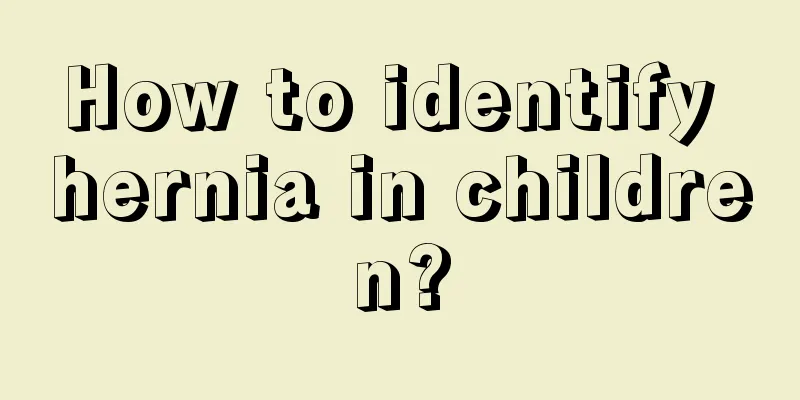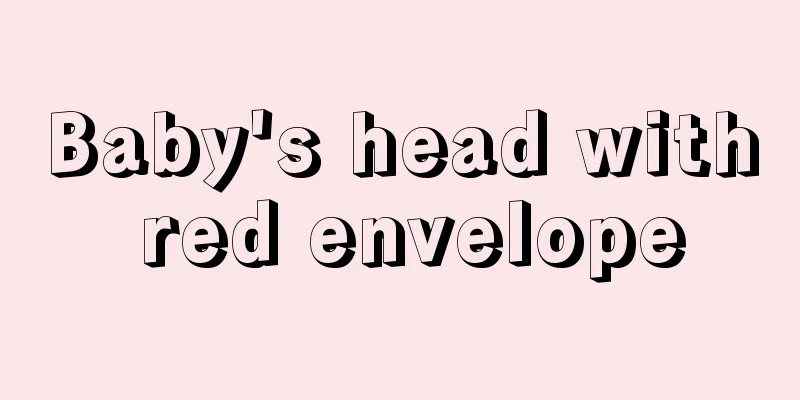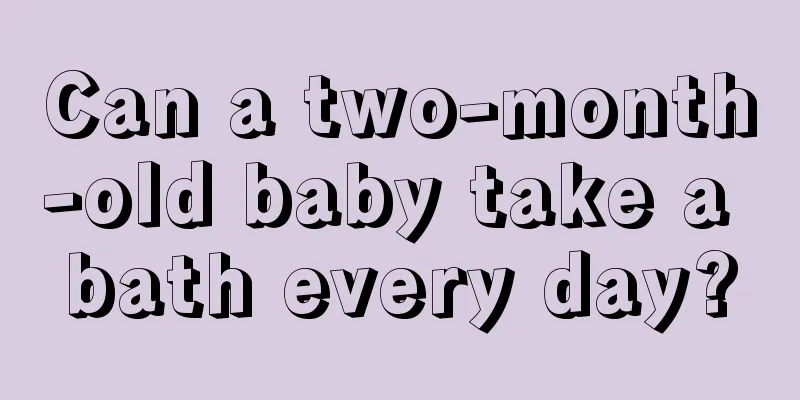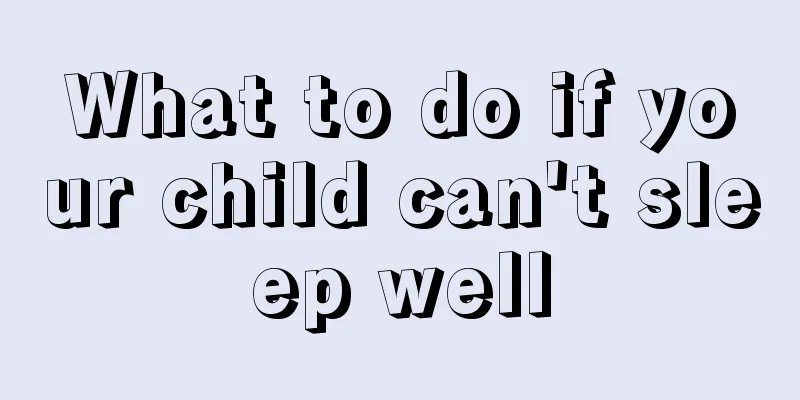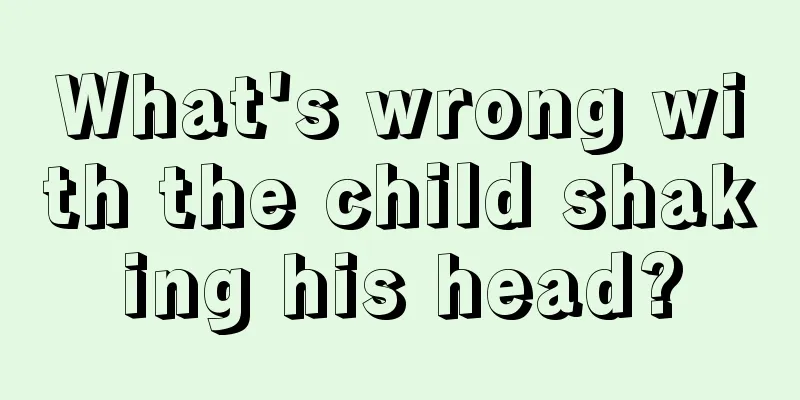6-year-old baby itches all over after having a fever
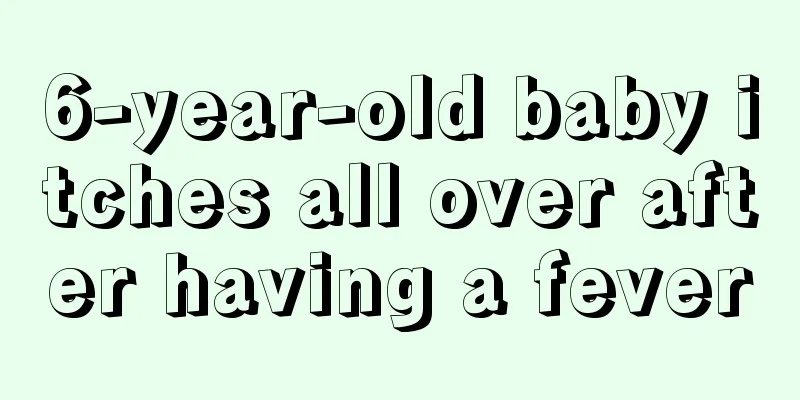
|
When children reach the age of six, they already have their own ability to move, but when certain medical conditions occur in life, they still need careful care from their parents. A 6-year-old baby having a fever is a problem that cannot be ignored. If the baby's fever is not treated in time, it is likely to damage the brain nerves. But why do some babies feel itchy all over after the fever? Why does a child have a fever and itch all over the body? If a child has a fever and then develops red spots and itching on his body, it may be a viral rash, which is a general term for viral skin diseases caused by various viral infections. There are currently hundreds of viruses that can cause skin rashes. Manual examination of these conditions is very important, and the treatment methods vary greatly. It is recommended to take your baby to a local hospital for examination as soon as possible. Only after a clear diagnosis can further treatment be carried out. Other possible complications after a child has a fever: 1. Dehydration and acid-base imbalance. High fever can easily cause dehydration, and the body loses water when sweating profusely due to taking antipyretics. Dehydration not only makes it difficult to reduce fever, but also affects metabolism and blood circulation, causing acidosis, etc. At the same time, the sodium concentration in the blood increases and the blood becomes hyperosmotic. The child will experience dry mouth, thirst, irritability, and even nonsense or convulsions. The fever will not only not subside but will become higher. Hyponatremia may occur, which is more common in infants and young children who are usually malnourished. 2. Febrile convulsions. Some children may have convulsions when they have a fever, which often occurs when a high fever suddenly arises. The convulsion usually occurs once for each fever and rarely occurs more than twice. As long as the convulsion does not last long and is handled properly, it will not have much impact on the child's health. 3. Cerebral edema. When the body temperature exceeds 41°C, proteins in the body will decompose, causing cerebral edema and leading to the death of the child or leaving sequelae of encephalopathy. Therefore, when a child has a high fever above 40°C, emergency treatment must be given. How to reduce fever physically in children 1. Drink more warm water, vegetable juice and fruit juice. Let your baby drink more water and replenish body fluids. This is the most basic method of reducing fever. It is very effective and practical and suitable for all babies with fever. Do not give your baby cold water, because fever is often accompanied by gastrointestinal symptoms and cough, and drinking cold water will aggravate these accompanying symptoms. Give your baby warm water. 2. Warm water bath, that is, wipe the whole body with a warm water towel. This is a great way to cool down any baby who has a fever. The water temperature is more suitable at 32-34 degrees, and each wiping time should be more than 10 minutes. The key areas to wipe are the skin folds, such as the neck, armpits, elbows, groin, etc. 3. Warm water bath: The water temperature should be about 3-4℃ lower than the child's body temperature, and each bath should last for 5-10 minutes. Many parents think that babies should not be bathed when they have a fever. In fact, on the contrary, giving babies a warm bath can help cool them down. A warm bath is suitable for all babies with a fever. 4. Low-temperature chamber method: Place the sick child in an environment with a room temperature of about 24°C to slowly lower the body temperature. In order to allow the skin to come into contact with the outside air and help cool down, people need to wear less clothes. If conditions permit, use air conditioning to lower the room temperature. This method is suitable for babies under 1 month old, especially in summer. Just open the baby's clothes and put him in a cool place, his body temperature will slowly drop. If your baby has chills and shivering when having a fever, you should not use the low-temperature chamber method. |
<<: Add complementary food signal
>>: What is the normal heart rate for a two year old?
Recommend
How to treat hunchback in children?
Children should live an innocent and carefree lif...
How to prevent nasal adenoid hypertrophy in children
There are many common diseases among children. Wh...
What medicine should be used for baby's scrotal eczema
In the process of taking care of babies, many mot...
How long is it best for newborns to be exposed to the sun?
The arrival of a baby makes many people very happ...
What is the development standard for babies over five months old?
The baby's development is an issue that every...
What can children eat to cure dry cough quickly?
Dry cough in children is quite harmful and is oft...
Is it good to clean children's teeth?
Dental health seems to have little impact on the ...
What to do if children have pharyngeal follicle hyperplasia
We know that we rely on the throat to swallow foo...
What department should I go to for my child's genital itching?
Children's genitals are very susceptible to i...
Why does a one-year-old baby spit up milk?
The baby is one year old. Many of the baby's ...
What to do if children have ingrown eyelashes
Inverted eyelashes are a relatively common phenom...
What is happening when my eight-month-old baby has nose bleeding?
Parents are always very nervous about their child...
If your child still poops standing up when he grows up, he may suffer from functional encopresis
Children's urination and defecation are alway...
What to do if your child has shingles
As we all know, children are a high-risk group fo...
Did your child break his finger on a toothpick?
Toothpicks are indispensable in our daily life. T...
